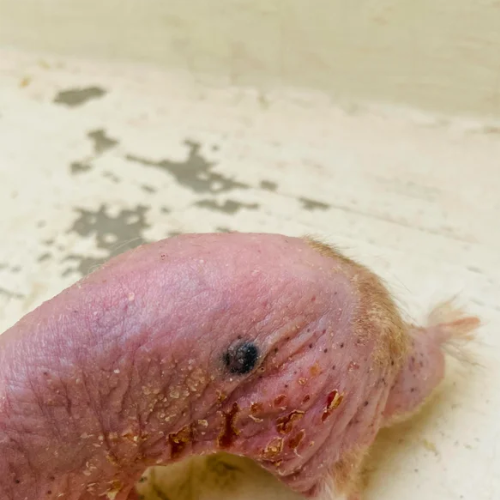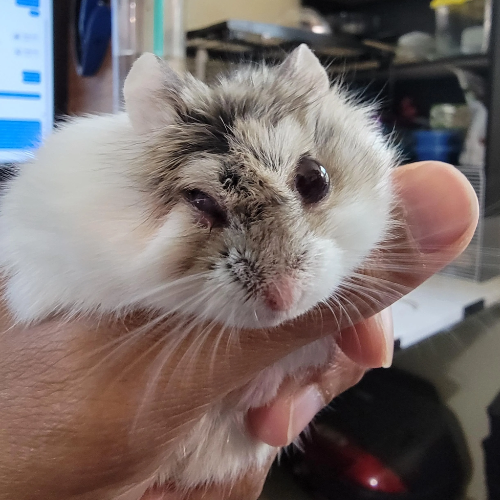Cushing’s disease is an unusual type of disease in hamsters. Most pet owners are unaware of this disease, and they panic when a hamster suffers from Cushing’s disease.
We have compiled this guide to help you know more about Cushing’s disease in hamsters, their symptoms, treatment, and much more.

Let’s dive in to know all about it!
Cushing’s in Hamsters Symptoms
Cushing’s disease can occur in all hamster breeds. However, this disease is common in hamsters, from 2-3 years. In addition, male hamsters are commonly affected by this disease.
Let’s move to see the symptoms of Cushing’s disease in hamsters.
- Increased thirst
- Frequent urination
- Enlarged appetite
- Hair loss
- Crusty or scabby skin
- Hyperpigmentation leads to dark areas over the skin
- Sagging abdomen
Complications with Cushing’s disease include.
- Vision issues
- Muscle weakness
- Infections
- Weak bones
- High blood pressure
- Extreme fatigue
- High blood sugar levels or diabetes
- Sleeping issues
- Irritability
Causes:
Cushing’s disease is where the adrenal glands start producing extra cortisol. Cortisol is a type of hormone which our body secretes at times of stress.
This extra secretion of cortisol is due to the bigger size of the adrenal gland or an issue within the pituitary gland of the brand leading to excess production of cortisol. Therefore, this disease is not because of poor care, nor is it contagious.
How to Check?
Checking Cushing’s disease is crucial. But, first, you need to go to the vet. The vet will collect your hamster’s urine sample, and then a quick test is run to determine the glucose levels in urine. If there are glucose particles in urine, the hamster is most likely suffering from diabetes, not Cushing’s disease.

A vet might also take your hamster’s blood sample and send it for testing to determine the cortisol levels. Usually, most hamsters present with lower cortisol levels than cats and dogs. However, a significant rise in cortisol is seen if a pet suffers from Cushing’s disease.
Another test includes sending urine for a lab test to determine cortisol levels in urine. This is a non-invasive test, but it is not 100% accurate for identifying Cushing’s disease in hamsters.
In certain cases, the vets also perform the stimulation test where the synthetic hormone stimulates the adrenal gland and checks hormonal levels.
Treat or Advice:
Unfortunately, not much research is done in this field for effective treatment solutions for Cushing’s disease in hamsters. If you are looking for professional advice you can always talk to a vet online.
Some vets use medicines that are for dogs in small amounts. Such medicines include anipryl, trilostane, or lysodren. There are reports which show improvement in hamsters after receiving the medicines while others don’t.
The main issue with the medicines is knowing the exact amount for treating Cushing’s disease in hamsters.
Treatment in hamsters is tricky because the signs are not painful; however, they are visible. Drugs in the UK for treating hamsters include Ketoconazole and Vetoryl.
Vetoryl is a licensed drug for treating hamsters with Cushing’s disease. However, this tablet is available with an enteric coating, making it difficult to break and dissolve in liquid. Plus, you need to get an accurate dose of the tablet.
On the other hand, Ketoconazole is antifungal, which kills cells of the adrenal cortex. Ketoconazole does not feature reversible action, while the action of Vetoryl is reversible.
Take advice from your vet before you administer any drug to your hamsters. The best method to identify whether the treatment is working or not is by measuring the amount of water intake by hamsters.
The treatment works if the water intake reduces in the past 24 hours with skin and hair condition improvement.
With Vetoryl, your hamster needs to undergo long-term therapy. At the same time, with Ketoconazole, you can stop the treatment once the symptoms are better. Eventually, you’ll see skin repairing with normal weight and normal muscle build in hamsters. Make sure to take advice from the veterinary surgeon as they know better how to deal with such conditions.
What Happens If Cushing’s Is Left Untreated?
If the Cushing disease is left untreated in hamsters, they are more prone to weakness and lethargy. They are at high risk to suffer from contracting infections like urinary infections. Apart from it, their skin is slow to repair even after an injury.
What is the difference between Cushing’s disease and Cushing’s syndrome?
Cushing’s disease in hamsters is when the body is making extra cortisol. Cortisol is a hormone that aggravates and releases in the body at times of stress.
It is a progressive disease, which means if it’s not treated, it will progress and worsen the hamster’s condition. The hamsters might lead an active life if the treatment is given on time.
In Cushing’s syndrome, on the other hand, an excess amount of cortisol is either present in the body or given externally. External cortisol can be given to the hamster due to corticosteroid medication for other diseases like prednisone.
Or the excess cortisol might come from an adrenal tumor or pituitary gland tumor, leading to excess cortisol levels.
Cushing’s disease is a type of Cushing’s syndrome. Therefore, they are commonly interchangeable.
FAQs
What Is the Survival Rate of Cushing’s Disease?
The average survival rate of Cushing’s disease in hamsters is around 2 years. However, it’s usually seen that hamsters suffer from Cushing disease at 15-18 months.
Can Cushing’s Go Away on Its Own?
A hamster might live similarly to the treated hamster with Cushing’s disease. This disease is progressive, which means it will cause several side effects, leading to negative consequences.
It’s important to take the hamster to the vet regularly and treat them with medications. Regular checkups and monitoring of cortisol levels might help get rid of this condition.
Does Cushing Cause Pain?
Cushing’s is not painful, but it has high-risk signs and symptoms causing the hamster to stay uncomfortable.
These signs include:
- High blood pressure
- Bladder stones
- Urinary tract infections
- Chronic skin infections
- Kidney infections
- Diabetes
- Changes in the liver (like vascular hepatopathy)
- High chance of forming blood clots
Conclusion:
Being a hamster owner is not easy; you need to be responsible enough to care for your hamster. So, if your hamster is suffering from Cushing’s disease, we hope this guide will help you identify the disease during the early onset with immediate advice and treatment by the vet.

Doctor of Veterinary Medicine (D.V.M.) at Nation Taiwan University,Master of Science (M.S.) in Biomedical Engineering at National Taiwan University of Science and Technology




